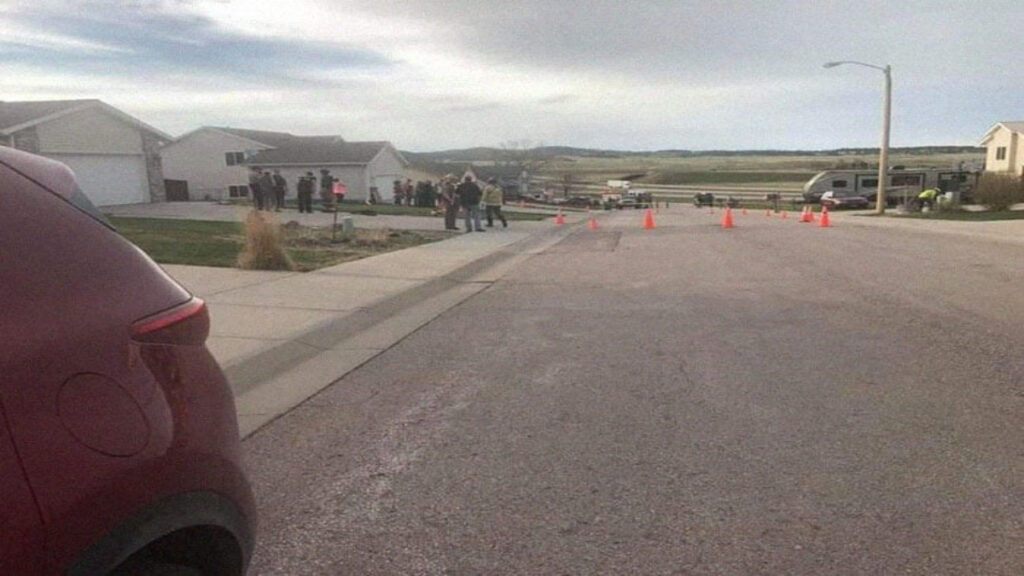Every homeowner’s worst fear materializes: you’ve recently acquired a new house in the suburbs. Suddenly, a colossal sinkhole, akin in magnitude to the Great Pacific garbage patch, emerges directly beneath it, consuming your new home entirely.
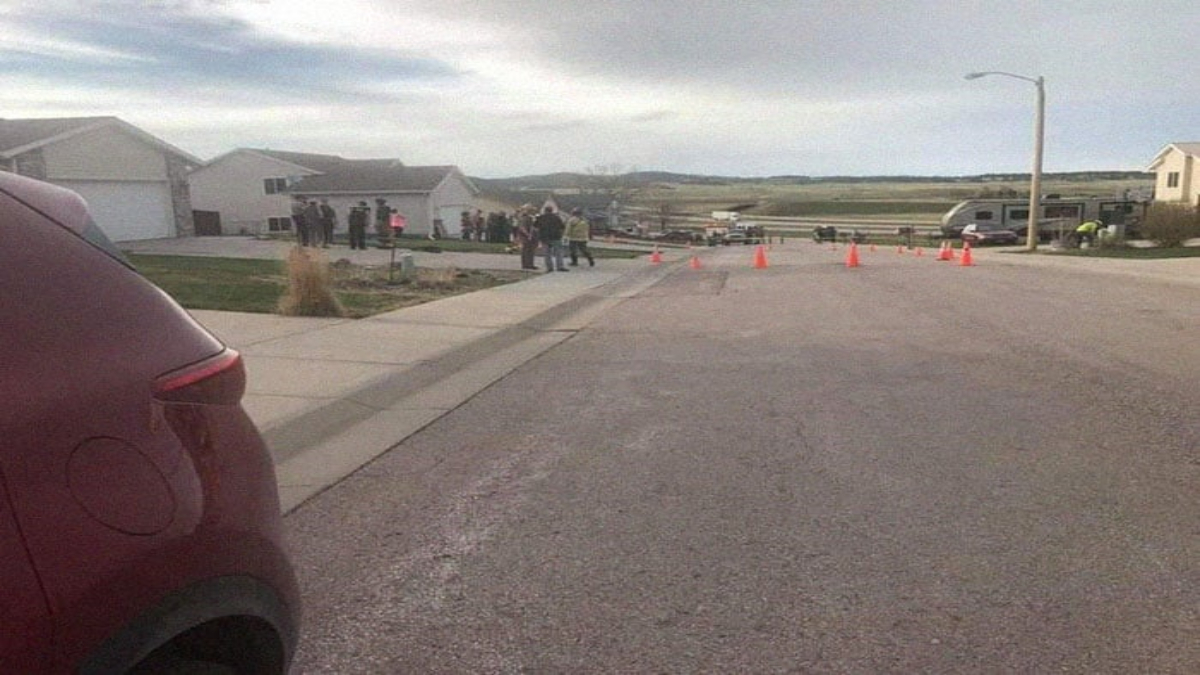
Keep reading to find out about their amazing exploration into forgotten depths and uncover the fascinating story of the pothole that turned into a giant.
Trouble Underfoot
On a typical morning in South Dakota, the sun is shining, birds are singing, and one street is blocked off with orange cones, sparking curiosity as you drive closer.
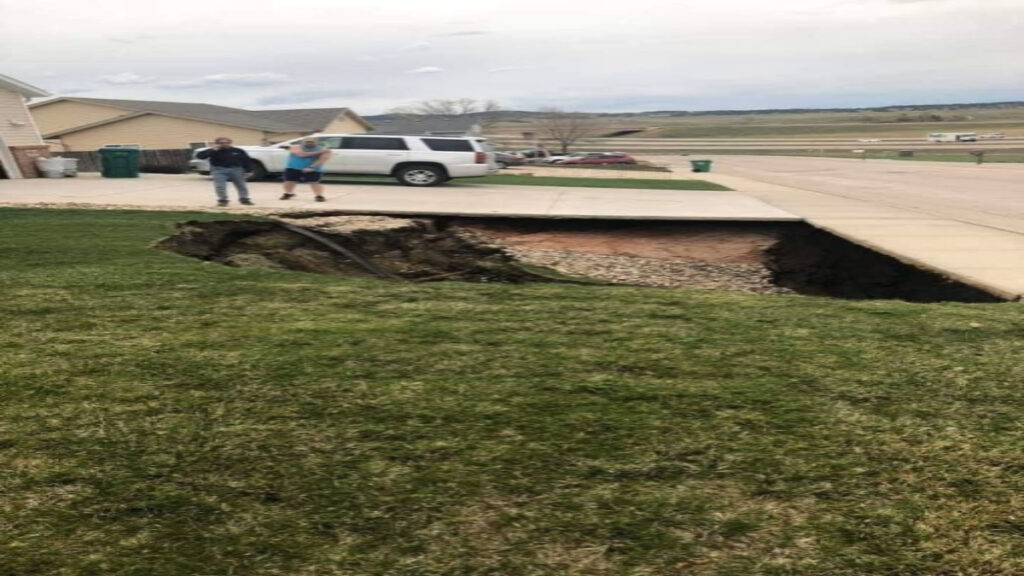
Two men stand in the yard, gesturing towards the sidewalk, indicating something amiss. As you exit your car, you sense an unsettling feeling underfoot, as if the ground has become unsteady since you first left for work.
That Sinking Feeling
Approaching cautiously, the men on the grass warn you to watch your step. As you begin to comprehend what you’re seeing, you realize their apprehension. Before you lie a hole about 25 feet by 25 feet in size. It’s no ordinary sinkhole.
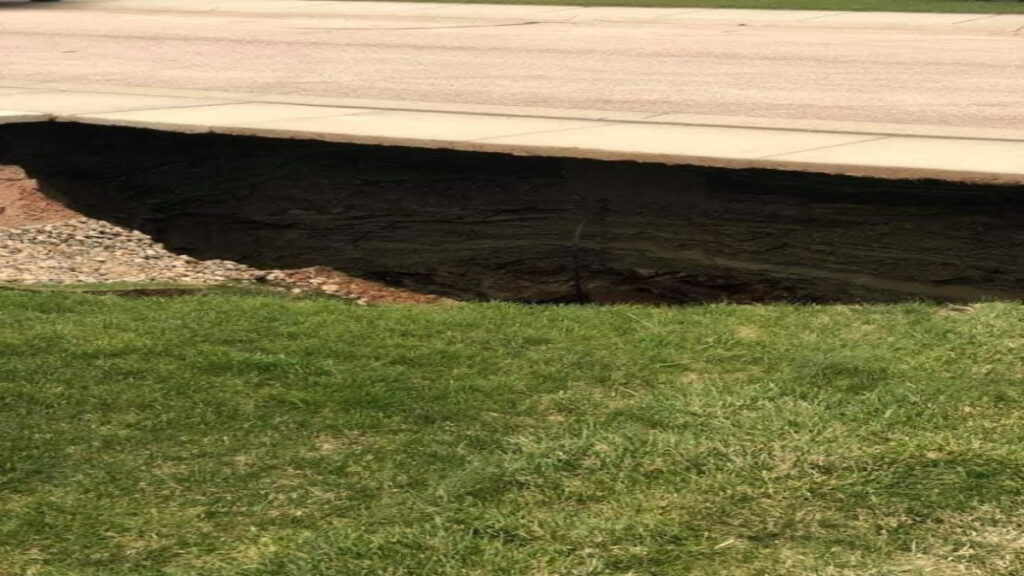
Gravel, exposed pipes, and darkness meet your gaze. Suddenly, you feel uneasy, as if the ground beneath you could shake and collapse at any moment. The men inform you that authorities are on the way. Feeling unsettled, you depart for work.
Hideaway Holes
On your way to work, you notice Black Hawk County’s emergency management service vehicles passing you, en route to investigate the crack in the earth beneath Hideaway Hills.

But how did this hole come to be? One of the two men in the yard, Albert Reitz, was mowing the lawn above when the hole suddenly ripped open. He recounted feeling a vacuum of wind pulling him back as the earth opened up behind him.
ALSO READ: Georgia Woman Jumps From Second Floor to Escape Apartment Building Fire
The Crisis Deepens
If he had been standing a few feet closer, he would have been dropped right in. The Black Hawk resident expressed gratitude, counting his blessings. Throughout the day, he witnessed his once-pristine home crumbling from the foundations up.
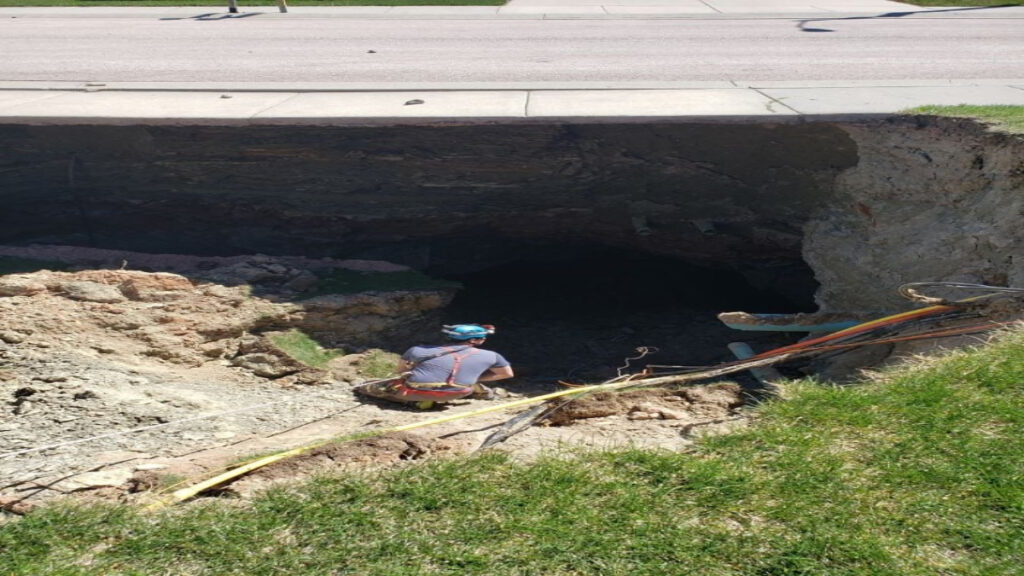
The hole, which nearly claimed Mr. Reitz’s life, had devastated his property. As authorities closed off the roads, his neighbors were likely left wondering what fate the hole held for them.
The Explorers Arrive
The monstrous hole continued to expand. Shortly after, a group of explorers known as the “Paha Sapa Grotto” arrived. They were determined to uncover the root of the problem.
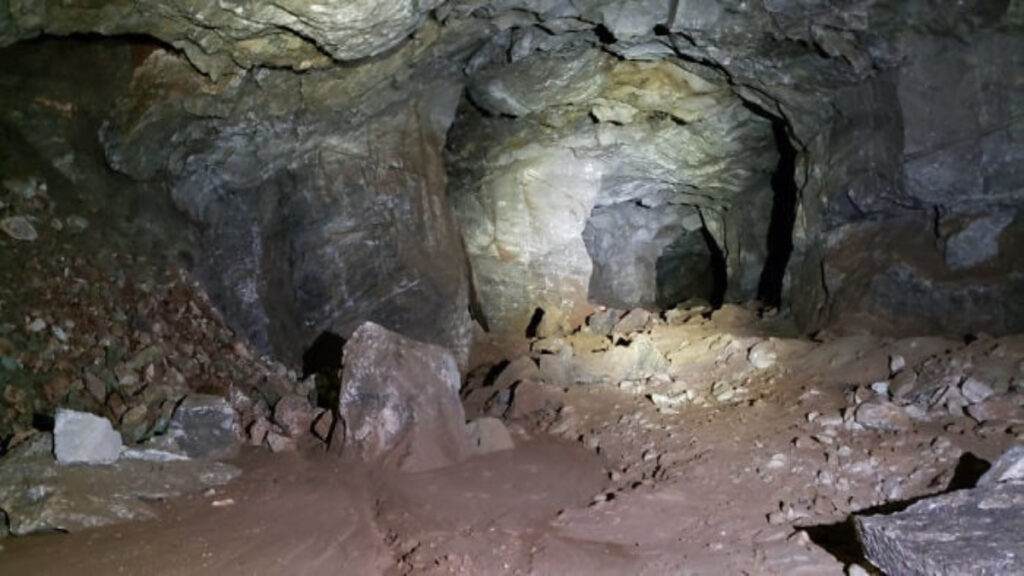
These climbers are members of the National Speleological Society. They are experts in cave exploration, science, and conservation. They recognized the local authorities’ limitations and they offered their expertise to help. What they uncovered left them astounded.
We Need To Go Deeper
Adam Weaver, the vice-chairman of the group, seen here assessing the drop, was the first to descend. He discovered an opening approximately 80 feet deep. Prior to advancing further, he instructed one of the diggers to remove the dangling concrete sidewalk overhead.

He secured his rope to a sturdy picket fence and began to rappel down. However, as he descended, he quickly realized that he wasn’t entering a cave. With his years of experience and expertise, he assessed the walls and tell-tale signs, discovering that he had descended into an old mine.
POLL—Should Public Schools Include Critical Race Theory and Sex Education in Their Curriculum?
Delving into the Gypsum Maze
During their second attempt to explore the gypsum maze, they uncovered some astonishing details about what lay below. The area they entered surpassed their expectations, towering at an impressive 15 feet and stretching 60 feet wide.

But they didn’t stop there; further explorations revealed that the dimensions of the gypsum mine spanned over 2,000 feet in length, and its width extended beyond an astonishing 150 feet.
The Hidden Waterway
From the images captured by Adam and his team, it’s evident that a river runs directly through the mines. It’s truly remarkable. Just imagine waking up one day to realize that for years, you’ve been living directly above a concealed waterway.
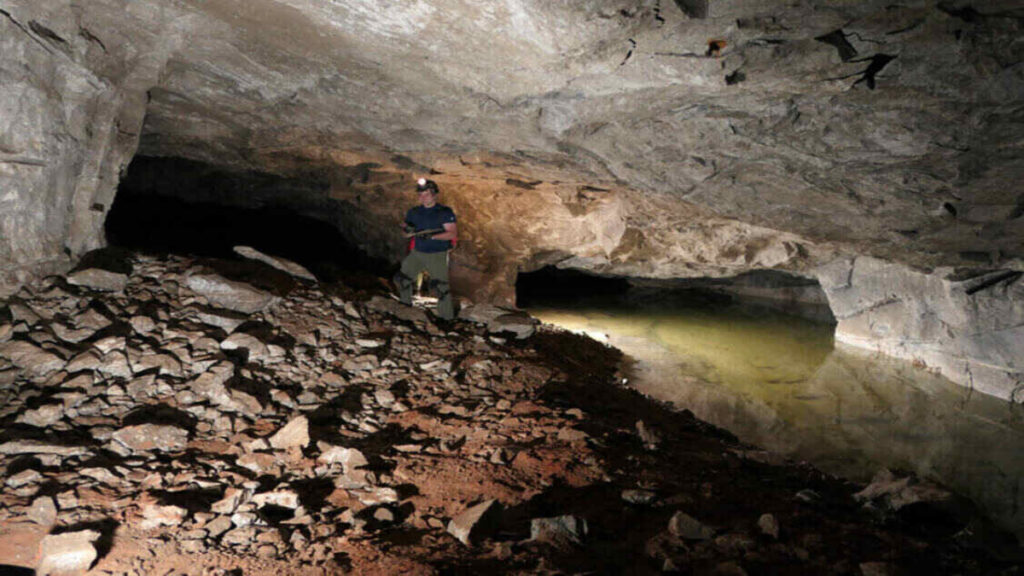
Imagine the residents’ expressions of disbelief upon seeing the images. The implications of what could have transpired are profound to contemplate.
A Large Artifact Uncovered
Amidst the underground river and old mining debris, the most intriguing discovery wasn’t an old car. How it ended up there remains a mystery.

The residents of Black Hawk are now pursuing compensation totaling over $75,000,000 from previous owners, developers, and real estate agents connected to their devastated properties.
ALSO READ: Former ESPN Sportscaster Survives Moving RV Crash on Southern California Freeway
The Astonishing Negligence
The revelation of what lay beneath those homes takes negligence to a whole new level, exposing the families living there to a range of risks and hazards.
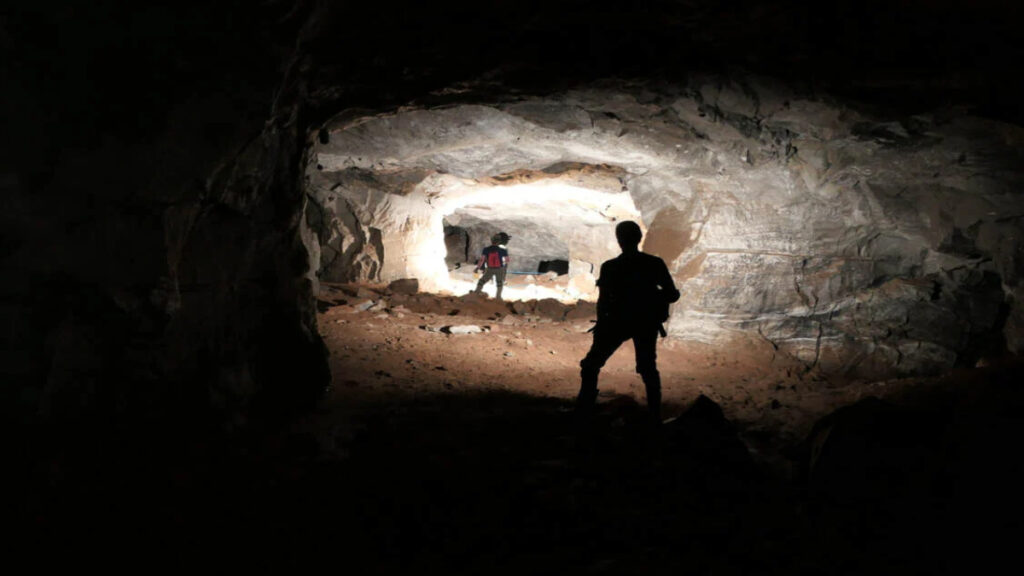
Although old gypsum mines are less prone to explosions than coal or metal mines, these families still encountered the serious risks of structural instability, subsidence, and environmental contamination.
A Bitter Blow
Despite expectations for government assistance, these residents are unlikely to receive grants, adding to the disheartening nature of the situation.

The Federal Emergency Management Agency (FEMA) shared that the circumstances surrounding it, whether it is a natural event or an outcome of negligence. Additionally, the potential duplication of federal benefits leaves the residents not eligible for the Hazard Mitigation Grant Program.
You Might Also Like:
Biden Slams Republicans, Says they’re Afraid of Trump’s Border Threat
FCC Links AI-Generated Biden Robocall to Texas Companies
These Are Ways to Use Tennis Balls Around the House Beyond Just Playing Tennis
Trump’s Fraud Trial Judge Fumes After Discovering a Key Witness in His Trial May Admit to Perjury
Federal Appeals Court Rules Trump Does Not Have Presidential Immunity in January 6 Case

